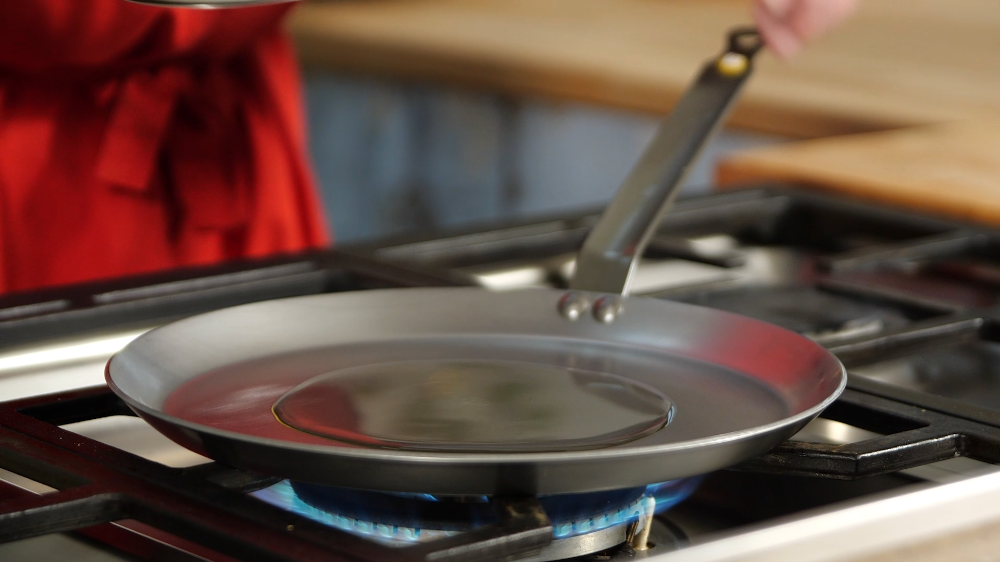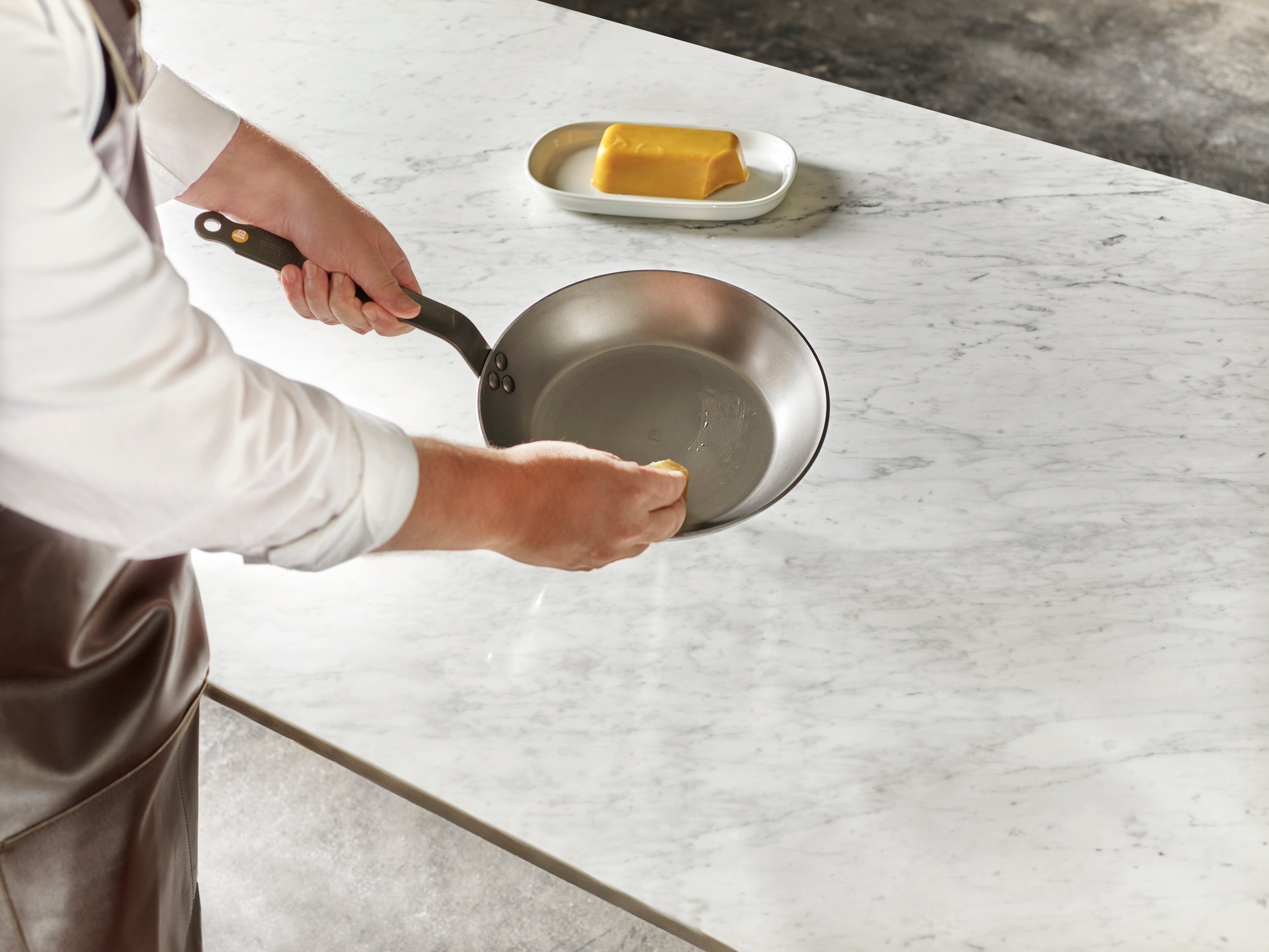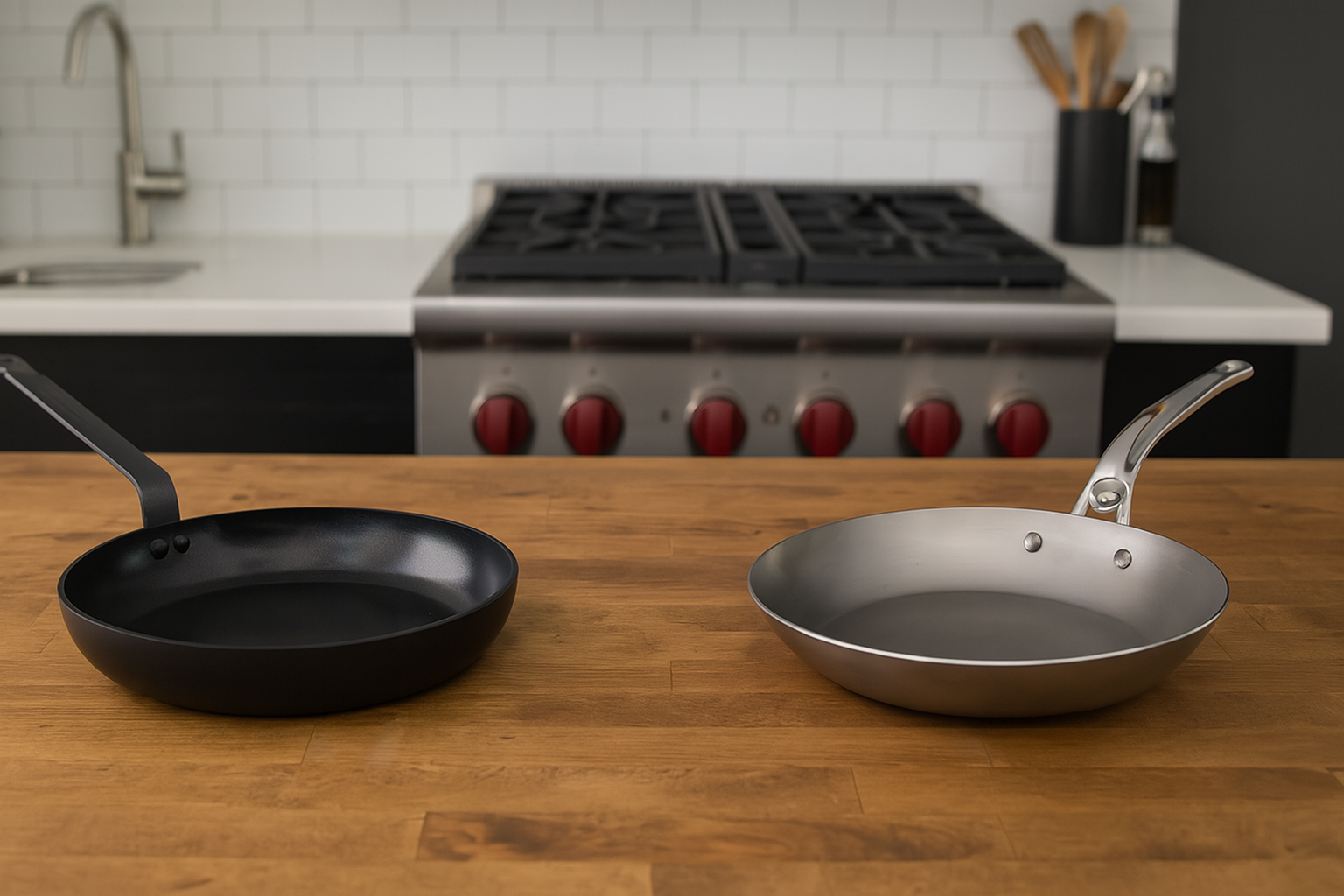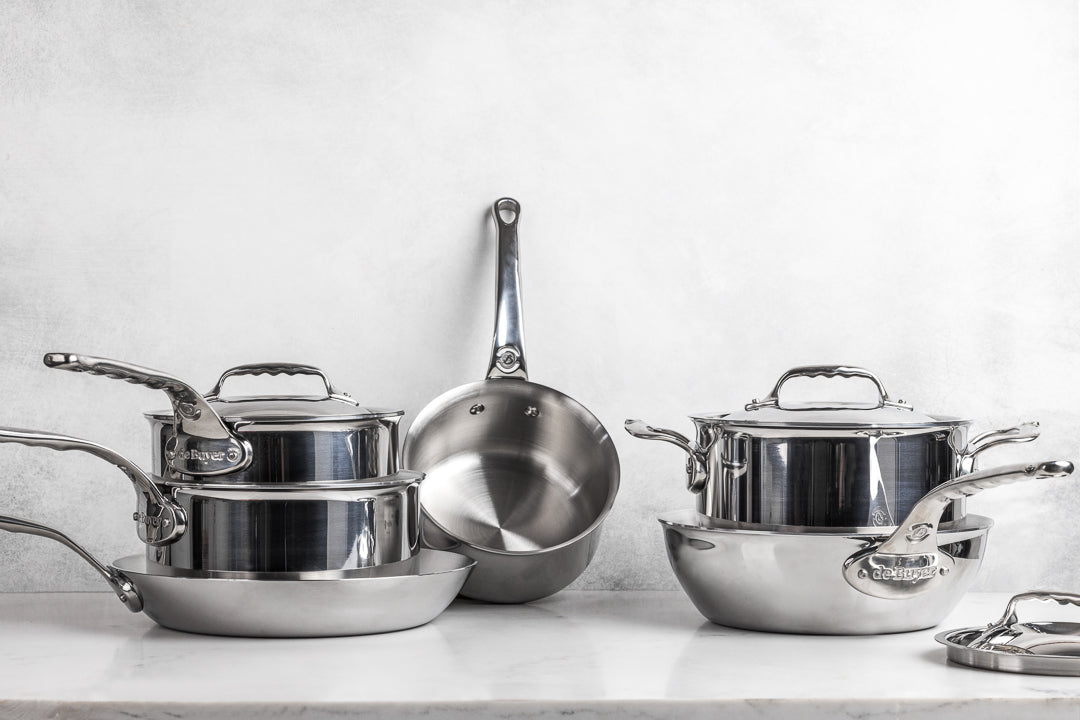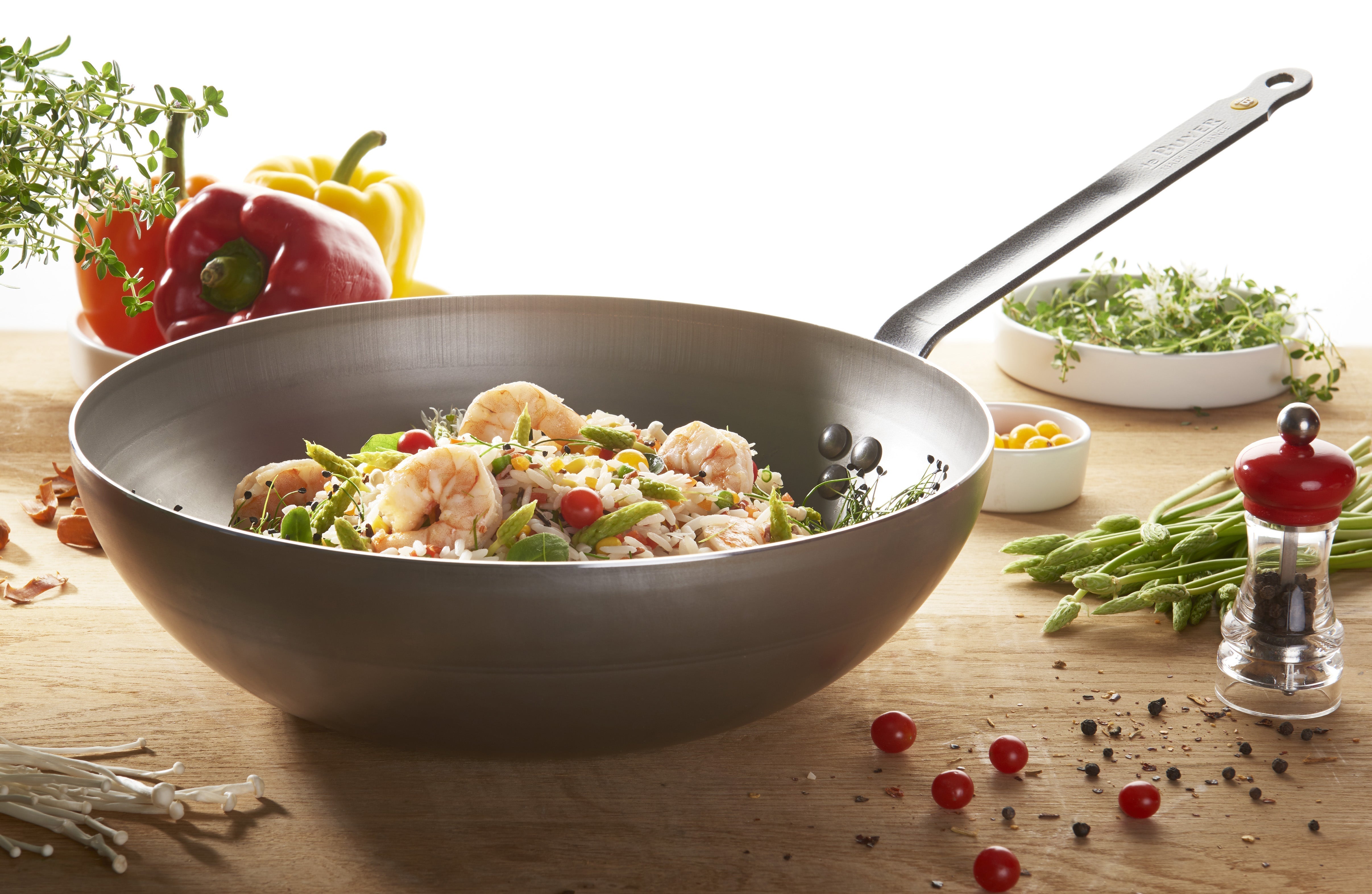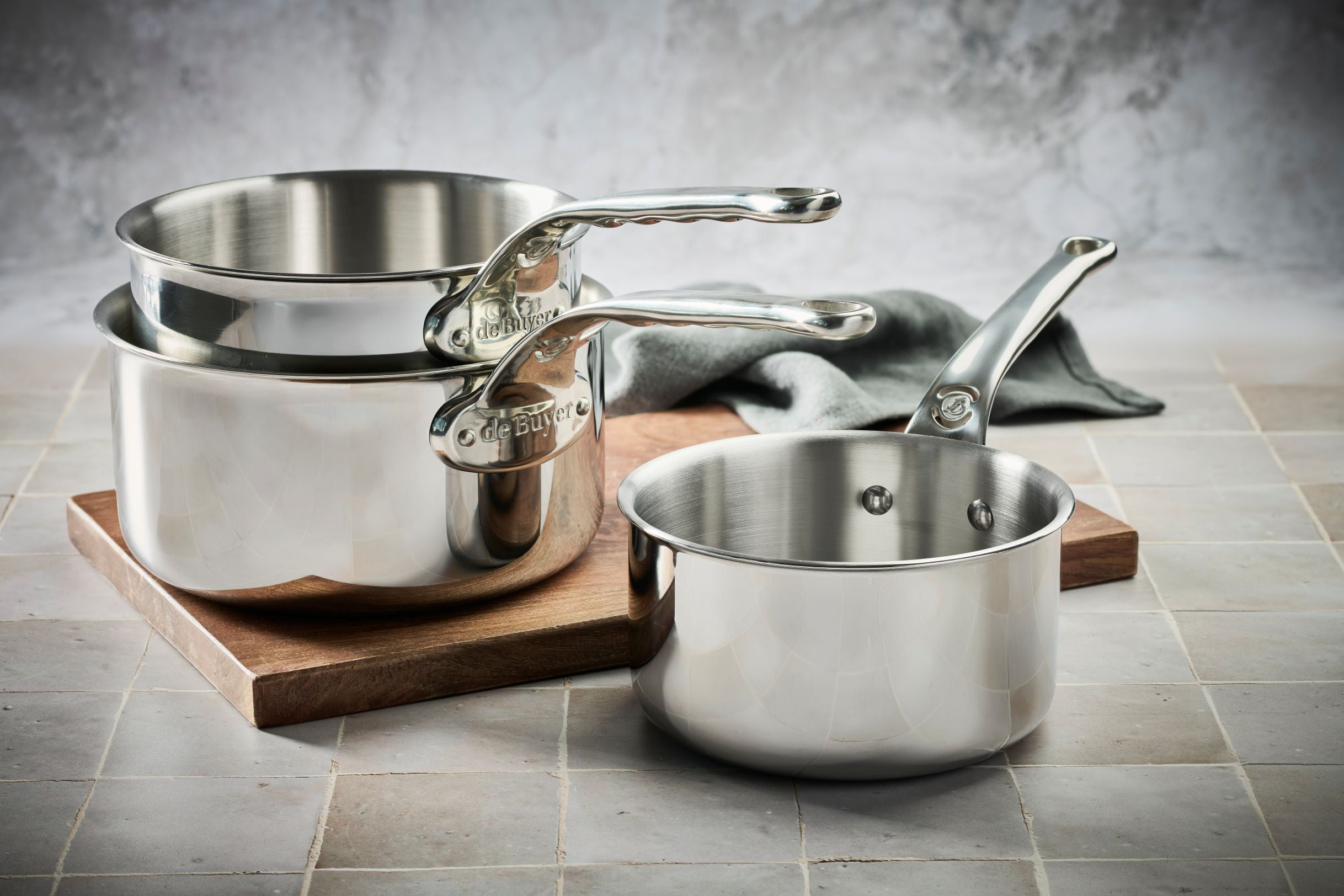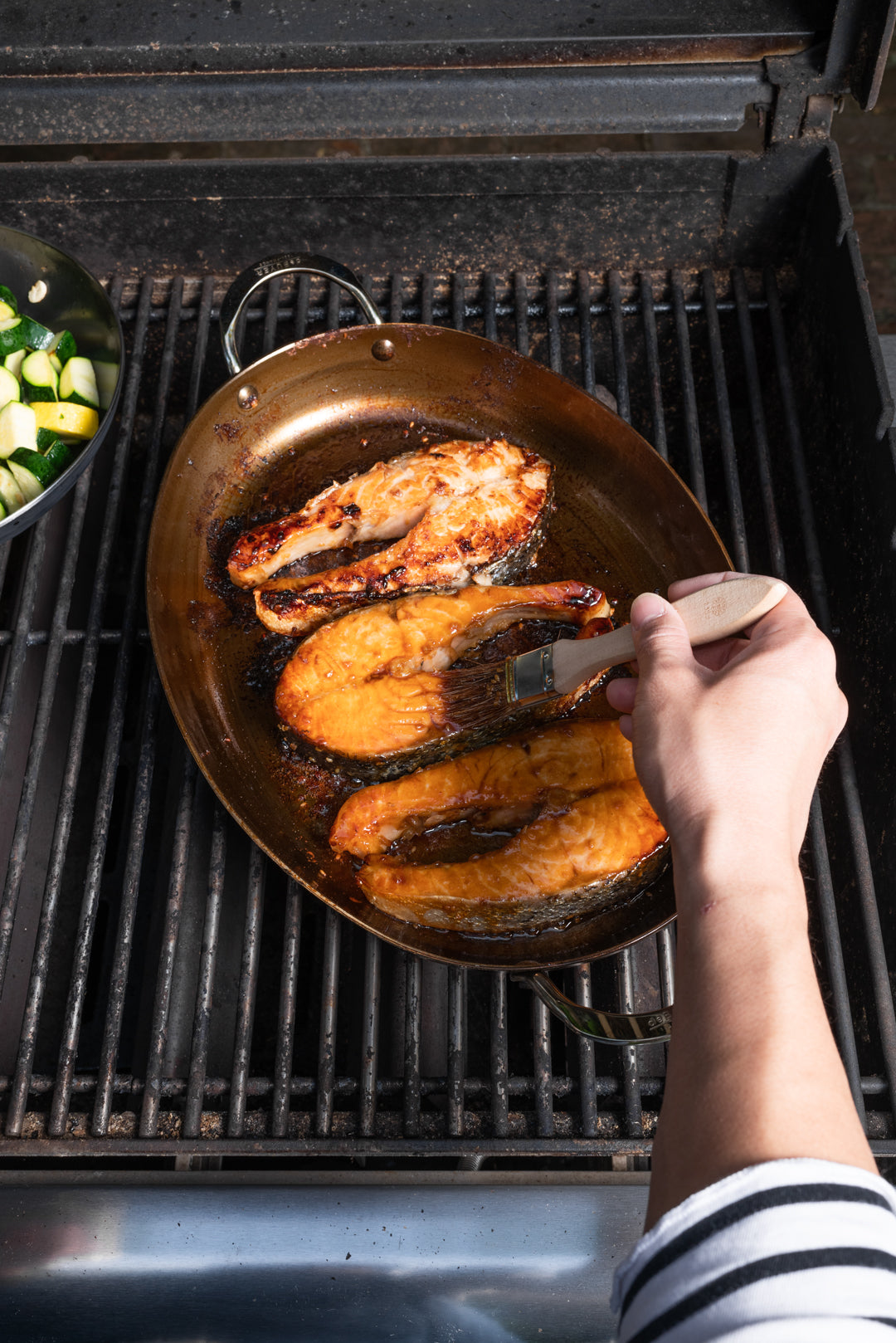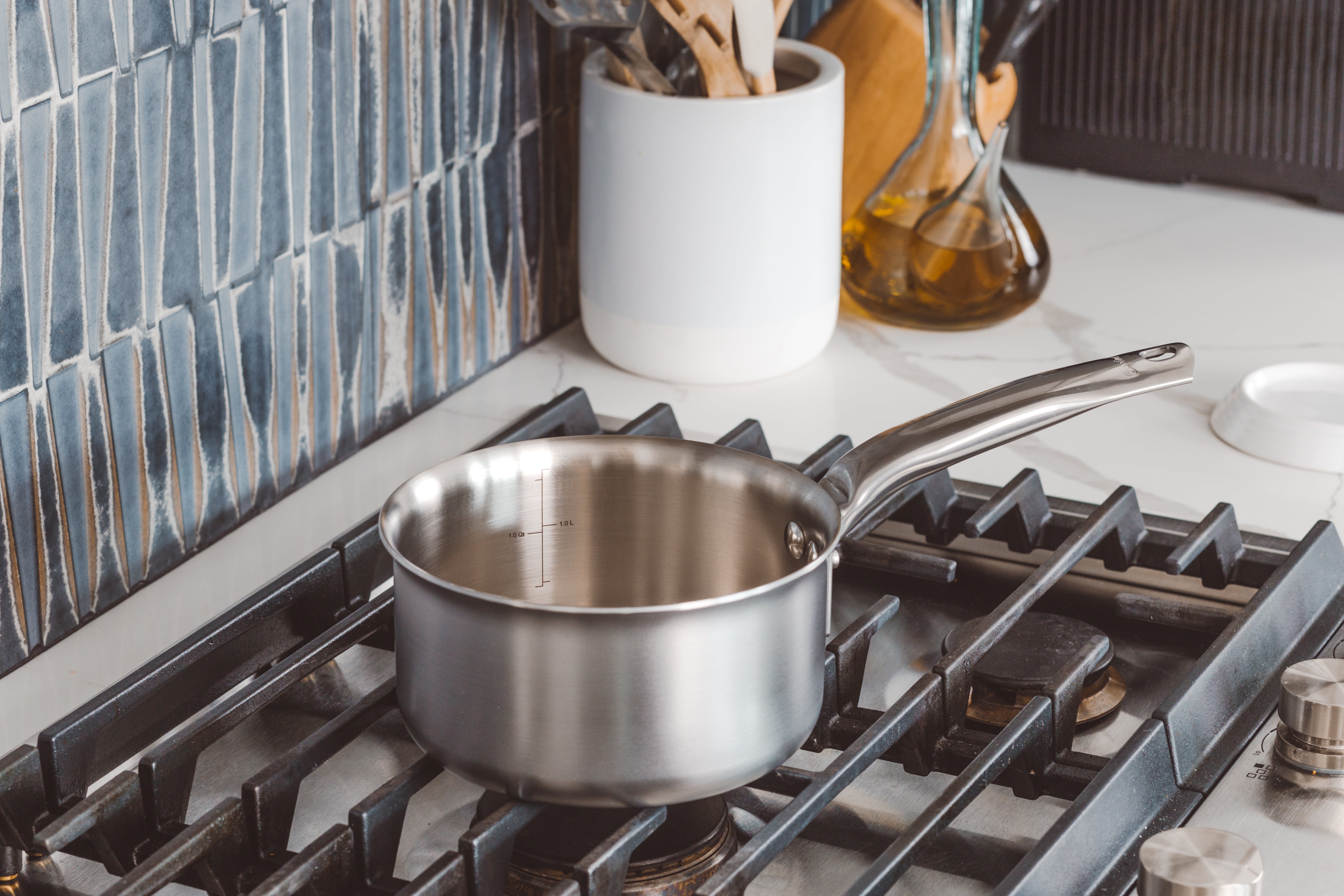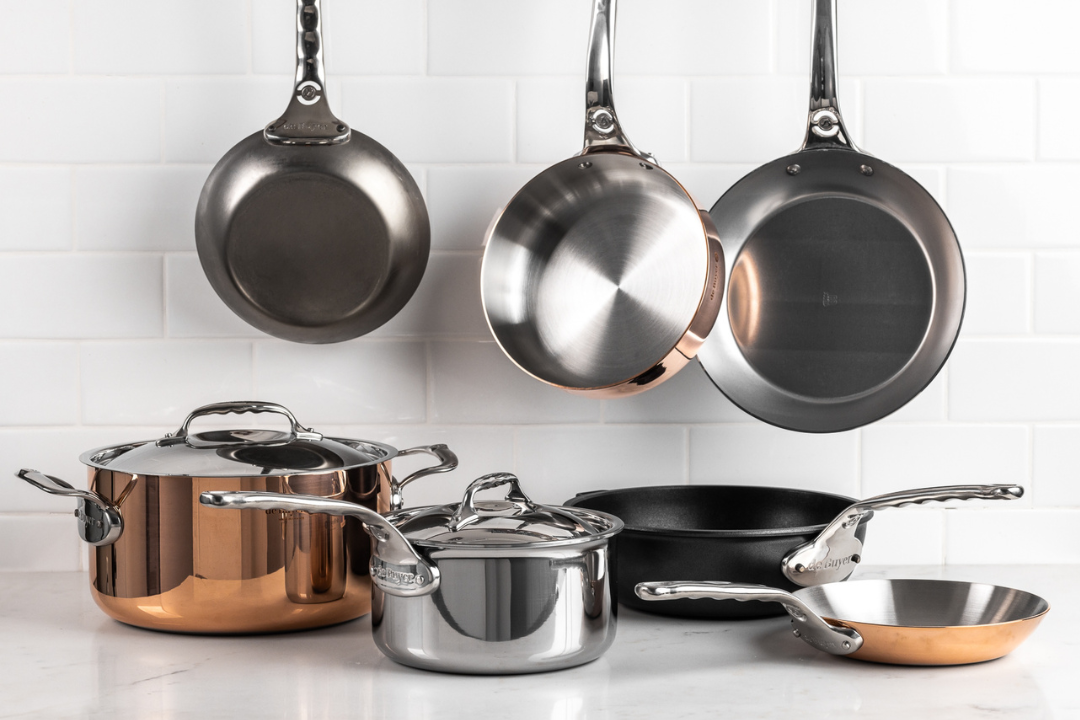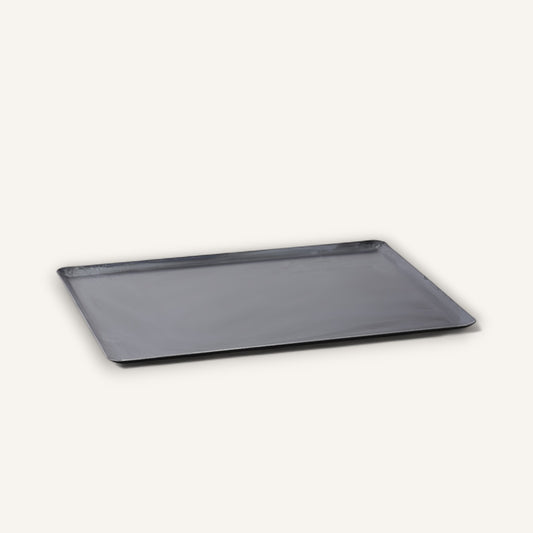The quest for the perfect pots and pans to complement an electric stove is complicated. Electric stoves require cookware that responds well to their unique heat distribution, which can be uneven or slow to heat, ensuring that your culinary creations are cooked evenly and efficiently.
The right choice of cookware can mean the difference between a meal that's just okay and one that's absolutely delectable. de Buyer as a trusted expert in cookware with a legacy of true craftsmanship. Our guide delves into the best cookware suited to electric stoves, helping you make informed decisions for your kitchen.
Electric Stoves and Their Cookware Needs
Before purchasing your pots and pans, you need to understand what type of electric stove you have, how it works, and what cooking challenges it presents.
Types of Electric Stoves
The types of electric stoves include coil, ceramic/glass top, and induction stoves.
-
Induction Cooktops: These cooktops use electromagnetic energy to heat cookware directly, offering fast, precise control. The surface stays cool, helping prevent baked-on spills; however, only magnetic cookware is compatible.
-
Coil Cooktops: Coil top stoves are durable and work with nearly any cookware, including cast iron and glass. They're generally reliable but offer less precise heat distribution.
-
Smooth Cooktops: These ceramic or glass top ranges have a flat surface with heating elements beneath the glass, making them resistant but not invincible to cracking.
Ceramic/glass cooktops are the most common form of electric stove and present unique challenges. These stoves can be slow to heat up and cool down, and temperature control is not always accurate or consistent between burners. For all electric stoves, but especially for ceramic and glass top electric stoves, you need responsive, sturdy cookware.
Heat Distribution and Responsiveness
Induction cooktops use electromagnetism to heat cookware, turning your pan into its own heat source. Coil cooktops use radiant heated metal coils, and ceramic/glass cooktops use radiant coils, halogen bulbs, or a combination.
Smooth top stoves are especially susceptible to hot spots. This occurs when a burner applies a hotter temperature to a specific part of the pan instead of evenly distributing heat. This is most likely to occur when the pan has not been preheated, when a too-high temperature is applied, or when a warped pan only partially connects with the stove.
The reality of hot spots is made worse by electric stoves' slower response time compared to gas stoves. It's common for cooks to become impatient with the slow response time, rapidly increase heat, and experience hot spots.
Surface Compatibility
The design of the cookware, particularly the need for a flat bottom, is essential for ensuring consistent contact with the stove's heating element. This flat design promotes even heat distribution, a key factor in cooking your dishes uniformly. Warped pans are a major issue on electric stoves since they increase the likelihood of hot spots.
Induction pans must be magnetically conductive to function on stovetops. It's easy to identify which materials work with induction since they're always clearly labeled.
Material Matters: Best Cookware Materials for Electric Stoves
Selecting the appropriate material for cookware is vital when using an electric stove, as the right choice can significantly enhance your cooking experience. Each of the following materials brings distinct advantages to the table, and understanding their properties can help you choose cookware that best suits your cooking style and needs on an electric stove.
Stainless Steel (With Thick, Bonded Base)
Among the preferred materials, stainless steel stands out for its resilience and ability to distribute heat evenly. This makes it an all-rounder, suitable for a range of cooking methods, from searing meats to simmering sauces. These pans are also compatible with all stove types due to their unique multi-ply construction.
In general, stainless steel pans come in either a 3-ply or 5-ply construction. The more layers, the better the performance. A 3-ply pan has a stainless steel exterior and an aluminum core for quick, conductive heating. A 5-ply stainless steel pan has multiple inner layers of aluminum surrounded by durable, heat-retentive steel.
These pans are light enough not to pose a considerable cracking risk to your electric stove top.
Carbon Steel
In addition to stainless steel, carbon steel is another material that offers unique benefits for electric stove cooking. These pans are celebrated for their exceptional heat retention and quick reaction time. Once at temperature, it maintains a steady heat that’s exceptionally reliable. Trust that everything from slow-cooking stews to fried eggs will be cooked to perfection on a responsive carbon steel pan. Once seasoned, carbon steel acts like a nonstick pan, making it a handy pan to own.
Cast Iron (With Caveats)
Cast iron cookware is prized for its exceptional heat retention, making it well-suited for slow cooking and frying. Once hot, it stays hot. However, not all cast iron is suited for every cooktop. Choose smooth-bottomed cast iron for electric or glass stovetops to prevent scratching or uneven contact. Keep in mind that cast iron is heavy, needs seasoning to stay nonstick, and requires careful cleaning and drying to prevent rust.
Materials to Avoid
Don’t use thin, inexpensive cookware that can warp easily. Cookware with uneven or textured bottoms is also challenging to use effectively on an electric stovetop. Items like ceramic nonstick cookware or a large cast iron dutch oven may be too heavy for these stoves.
Key Features to Look for in Pots and Pans
When buying cookware for electric stoves, several key features must be carefully considered to ensure safety and optimal cooking results.
Flat, Smooth Bottom
Stability is paramount; cookware must sit flat on the stove's surface for uniform heat distribution, aiding in even cooking and enhancing safety by preventing wobbling or tipping. Maximum contact is the goal. Carefully evaluate the flatness of a pan before purchase.
Thick, Bonded Bases
The thickness of the cookware is crucial, as thicker materials distribute heat more evenly, reducing the occurrence of hot spots and uneven cooking. Look for multi-ply construction since it’s inherently more conductive.
Weight and Size
You want to select stable cookware that's still easy to handle. If you have a particularly heavy pot, never drag it over your stovetop's surface. This will almost certainly damage your stove. Always aim to match the pot or pan size to the heating element size. This prevents heat loss and helps the burner perform optimally.
Handle and Lid Design
Equally important are the design and material of the handles; cookware with heat-responsive, cool-to-touch, or heat-resistant handles ensures safe and comfortable handling. Tight-fitting lids play a critical role in maintaining heat and moisture, which is especially important for simmering or braising.
Care and Maintenance of Electric Stove Cookware
Ease of cleaning is a significant factor; options like nonstick carbon steel surfaces or smooth stainless steel finishes not only make cleaning effortless but also help maintain the cookware's appearance and longevity.
It's advisable to avoid high heat settings, which can cause warping and damage, and to prefer hand washing over dishwashing to protect the cookware’s integrity and appearance. Prompt drying after washing is crucial to prevent water spots and rust, a step particularly important for cast iron. To avoid scratching, especially on nonstick surfaces, using wooden or silicone utensils is recommended.
For cast iron and carbon steel pieces, regular seasoning is key to maintaining their nonstick qualities and preventing rust, ensuring that your cookware remains in top condition for years.
How to Season Your Carbon Steel or Cast Iron Pan
- Wash the pan with hot water to remove the beeswax coating. It's okay if some remains. It can help with seasoning. Dry thoroughly.
- Heat evenly over medium-high heat. Add a thin layer of oil and swirl to coat the surface.
- Heat until smoking, about 10 minutes. The pan will darken as the seasoning develops. Turn off the heat and let it cool.
- Wipe away excess oil with a paper towel once cooled.
- Reheat for two minutes to remove moisture. Let it cool again.
-
Repeat 1–3 times. The more you cook, the better the seasoning gets.
Your Journey to Better Electric Stove Cooking Starts Here
Flat bottoms, thick bases, and quality materials are essential for use on your electric stove. Beyond these requirements, you should choose the pan that best suits your cooking and maintenance preferences.
Enhance your electric stove cooking with de Buyer's premium cookware. Find the best pots and pans specifically designed for electric stoves and elevate every dish you create.


